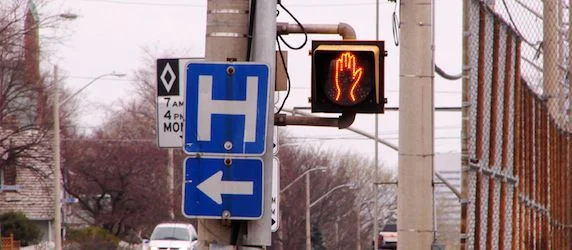The rate at which women get called back for additional imaging after screening mammography may be higher at hospitals than at community office practices, mostly due to differences among the patients, according to a U.S. study published online in the journal Radiology. The findings highlight the limitations of recall rates as a quality measure for breast cancer screening, the researchers said.
“Recall rate by itself is used as a quality indicator by the federal government,” said Ana Lourenco, M.D., radiologist at the Rhode Island Hospital and the Alpert School of Medicine at Brown University in Providence, R.I. “Therefore, it remains important to understand the factors that influence recall rate for individuals and practices.”
The researchers reviewed data between May 2008 and September 2011 for five radiologists with expertise in breast imaging who interpreted mammograms at a community office practice and an academic referral hospital. Both sites used full-field digital mammography and batch screening interpretation.
The radiologists interpreted a total of 74,297 screening mammograms between both sites during the study. The total number of patients recalled was 5,799, for an overall recall rate of 7.8 percent. At 6.9 percent, the recall rate at the community site was significantly lower than the hospital rate of 8.6 percent.
“For every radiologist, the recall rate was significantly lower in community practice than in the hospital setting,” noted Dr. Lourenco.
When the researchers compared the two groups of patients, they found some important differences that could have influenced recall rates. Significantly more of the hospital patients had undergone previous surgeries and biopsies. Slightly more than 13 percent of the patients at the hospital site had a history of surgery, compared with 5.6 percent at the community site, and 7 percent of patients at the hospital had undergone a biopsy, compared with 1.4 percent at the community site.
“These patients may have more complicated mammograms to interpret or may be at higher risk for cancer than patients at the community site,” Dr. Lourenco said. “Higher risk patients would be expected to increase the recall rate of the population.”
Another key factor was age. The mean age of the patients at the hospital site was 56 years, compared with a mean age of 63 years at the private practice.
“Younger age has been associated with higher recall rates,” Dr. Lourenco said.
While Dr. Lourenco commended efforts to develop quality metrics for breast cancer screening, she cautioned that recall rates are affected by factors out of the radiologist’s control and, therefore, cannot alone determine the quality of a radiologist or an institution.
Source: RSNA, 24 July 2013.
References:
Rothschild J, Lourenco AP, Mainiero MB. Screening Mammography Recall Rate: Does Practice Site Matter? Radiology. 2013 Jul 24. [Epub ahead of print]
Latest Articles
Mammography
The rate at which women get called back for additional imaging after screening mammography may be higher at hospitals than at community office practices, m...










